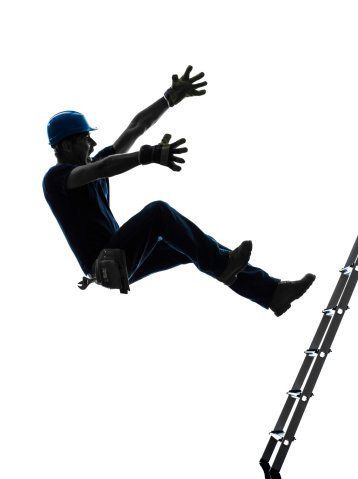
They will be visiting construction sites across NSW to ensure compliance and raise awareness about the risks when working at heights.
This blitz is geared towards saving lives and has been prompted by a tripling of falls incidents reported to us over the last five years, with the majority occurring in the construction industry. So far this year, eight workers have been killed – and many more suffered catastrophic injuries.
Myles Lowry knows all too well the terrible consequences when workplace safety goes awry. He was severely injured when he fell four metres onto a concrete slab on a mid-north coast construction site.
An additional and alarming statistic reported by SafeWork Australia is that nearly half of all fatalities in construction last year occurred between October and the end-of-year. SafeWork NSW aim to make sure all tradies are safe and sound this Christmas.
The blitz coincides with the introduction of tough new laws, where employers can be fined up to $3600 for failing to control the risk of falls adequately.
Fall prevention deserves your attention.
Each year there are dozens of serious incidents where workers have fallen from ladders. While workers in construction, retail and building maintenance are most commonly injured, any worker using a ladder – at any height – is at risk.
So what can you do to avoid becoming a statistic?
The first thing to consider is whether you really need to use a ladder for the job. Ladders should only be used for simple access jobs or for a short duration. If you can work from ground level or using an alternative like scaffolding; do so.
But if a ladder is your only option, here are the 10 golden rules that can help you avoid injury.
- Choose the
right ladder for the job. It should meet Australian standards and the load
requirements of the job.
- Inspect the
ladder for damage before each use.
- Only use a
ladder if you are physically capable of doing so.
- Always set up
the ladder on a flat, stable surface. Consider safety devices like leg
levellers, anti-slip gutter guards and stabilisers.
- Always maintain
three point of contact with the ladder. This means two hands and one foot, or
two feet and one hand on the ladder. Never lean or reach away from the ladder
while using it.
- Only take small
items up or down a ladder and items that allow you to maintain three points of
contact.
- Never exceed
the working load limit on the ladder. Remember to include the weight of your
tools.
- If you’re using
an extension ladder, secure it at the top, bottom or both. If this isn’t
possible then have someone hold the ladder. If you’re using an A-frame ladder,
make sure it’s fully open and locked.
- Extension
ladders should be angled at a ratio of 1:4. That is, position the base of the
ladder 1 metre away from the structure for every 4 metres of height.
- Do not climb
past the second-top rung of a ladder, and never straddle the top of an A-frame
ladder. When climbing down, face the ladder and climb to the bottom rung before
stepping off.
Did you know that asbestos is a naturally occurring substance? It might surprise you to learn that it can actually be found in rock, sediment and soil throughout regional NSW.
While the chances of coming into contact naturally occurring asbestos (NOA) are slim, workers and residents in affected areas should still know what to look for and how to manage it.
So what do you need to do?
NOA is found in a variety of colours, shapes and sizes, and can be difficult to spot. The SafeWork website includes a handy map to let you know whether you’re in a low, medium or high risk region.
If you’re conducting work in an affected area, take the following precautions:
- Limit
dust-generating work and avoid handling rocks and soil that could contain NOA.
- Consider the
weather. Try not to do work that disturbs the ground on windy days, or if
conditions are dry and dusty.
- Wet down areas
if necessary, particularly when planting, seeding and digging.
- If you think
you've found NOA, cover with clean soil, rock or other material where
practical.
- If you control
a workplace that is affected, you should have an asbestos management plan in
place. This should include providing PPE to any workers who might be disturbing
the ground and training your workers.
- Consider calling
in a licensed asbestos assessor or an occupational hygienist to test the site
for NOA.
